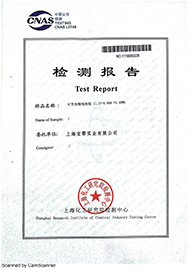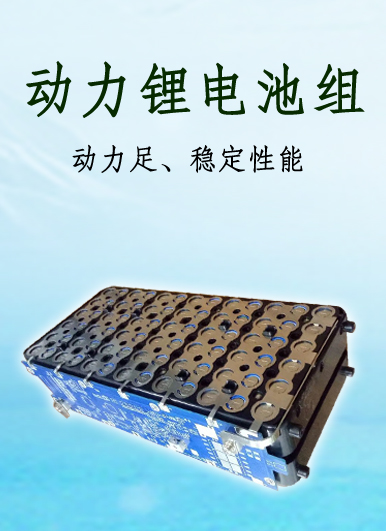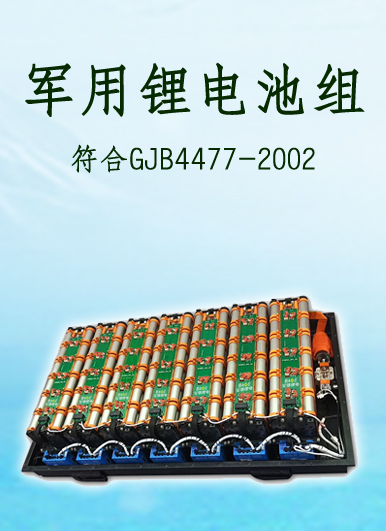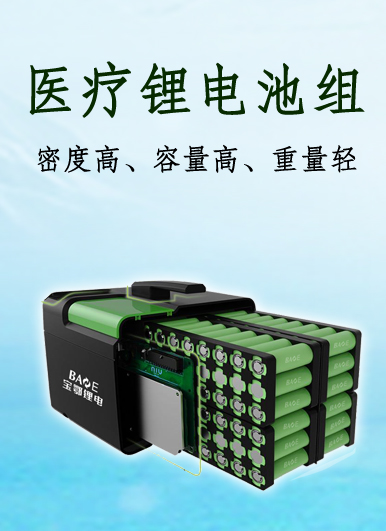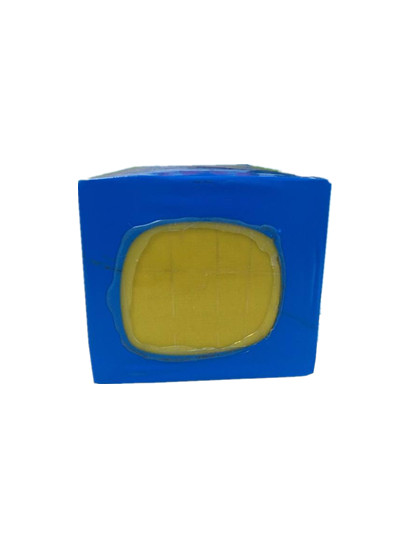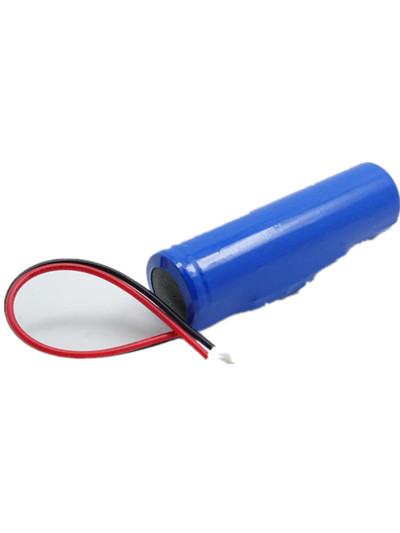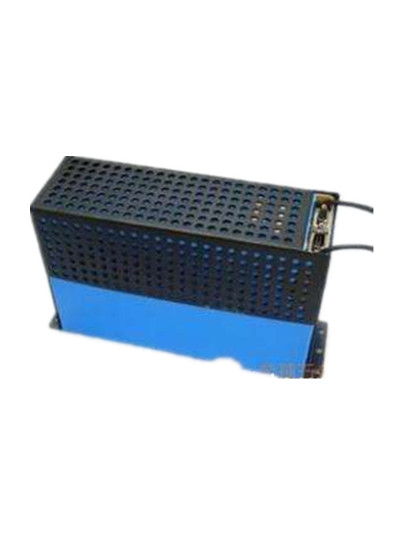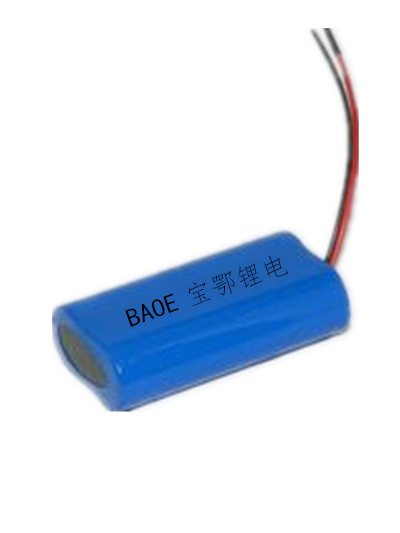The cathode materials of lithium-ion batteries are composed of three components, lithium iron phosphate, lithium cobalt oxide and lithium manganate, and the cathode materials are graphite, silicon and lithium titanate. The same batch of raw materials is very important for the consistency of battery performance. In the production process, it is necessary to strictly control the size distribution, specific surface area and impurity content of raw materials to ensure the batch consistency of raw materials.
Production Technology of Lithium Ion Battery
Battery production process consists of several processes, each process may affect the consistency of the battery. In order to achieve the same performance of production units, reasonable design and control of each process must be carried out to make it repeat in parallel. According to the performance requirements of batteries, the production process of batteries was designed, and the effects of raw materials, electrodes and electrolytes on the consistency of batteries were analyzed, so as to control the threshold of each process parameters reasonably. The production line reduces human intervention and automation can also improve the consistency of batteries.
2 sorting system
In order to reduce the adverse effects of initial state differences on battery packs, it is usually necessary to screen individual batteries and combine batteries with more consistent state parameters. Battery grouping methods mainly include single parameter grouping method, multi-parameter grouping method and dynamic characteristic curve grouping method. By comparing the difference of charge-discharge curves between different batteries at the same rate, the dynamic characteristic curve matching method can well reflect the characteristics of batteries, and the sorting effect is ideal.
3 Battery Outside Circuit
Series and Parallel Connection of Batteries
Connection mode of battery pack affects battery consistency. At present, there are two better connection modes: first, two identical batteries are connected in parallel as one module, then the modules are connected in series (PSB); first, two different batteries are connected in series as one module, and then the modules are connected in parallel (SPA).
Battery Management System
In order to improve the performance and service life of batteries, it is necessary to manage and maintain single batteries. Battery management system is an important guarantee for the normal operation of battery system. Its main task is to ensure the performance of battery pack, prevent battery damage, avoid safety accidents, make the battery work in suitable areas and prolong its life. BMS consists of sensors, actuators, controllers and signal lines. Its main functions include data acquisition, state estimation, charge and discharge control, balanced charging, heat management, safety management and data communication.
Although battery management technology has been widely used, it still needs to be improved, especially in the estimation of SOC and the accuracy of data acquisition, equalization circuit, battery fast charging and so on. Due to the different characteristics of different types of batteries, BMS suitable for all batteries is the main research direction at present.
Equilibrium control
In order to alleviate or even eliminate the inconsistency among the individual batteries in the battery pack and improve the performance, life and safety of the battery pack, the inconsistency of the battery pack can be effectively improved by balancing circuit and balancing control strategy.
Equilibrium circuit topology structure: The research of equalization circuit topology structure is mainly to design and improve the equalization circuit structure, improve the equalization efficiency and reduce costs. According to whether the equalization circuit consumes energy in the equalization process, it can be divided into energy-consuming equalization and non-energy-consuming equalization. Energy-consuming equalization circuit uses energy-consuming elements to consume the battery power with higher voltage in the battery pack, thus realizing the unity of single battery, simple circuit, fast equalization speed and high efficiency, but it will lead to low energy utilization rate of the battery pack; non-energy-consuming circuit uses energy storage elements and external equalization circuit to realize energy conversion between batteries. Shift, high energy efficiency, non-energy consumption balancing has switched capacitor type, converter type and transformer type.
Equilibrium control strategy: Equilibrium control strategy is to determine the mode of operation of the equalization module. At present, the working methods include maximum equilibrium method, average comparison method and fuzzy control method. The improvement of equalization capability is an important direction of battery consistency research. Equilibrium technology needs to be further improved, including:
(1) SOC is the most ideal criterion, and the accuracy of real-time estimation needs to be further improved; (2) optimizing the topology of the equalization circuit, improving the equalization speed and shortening the equalization time; (3) equalization control strategy also needs to be optimized to determine the optimal equalization parameters and find the appropriate equalization path according to the equalization circuit to achieve fast equalization. Purpose.
At present, the research of equalization control strategy mostly focuses on the design and implementation of equalization hardware circuit. But the equalization circuit parameters will affect the equalization effect. In addition, the state of charge, equalization threshold, charge-discharge current, the ratio of equalization current to charge-discharge current and the switching mode of charge-discharge conditions also affect the equalization effect.
4 Charging and Discharging Strategies
Scientific and reasonable charging and discharging strategies can improve the efficiency of battery energy utilization. At present, the best charging method of comprehensive performance is battery management system and charger coordinated charging in series. Through BMS monitoring the environment temperature of battery pack, voltage and current of single battery, consistency and temperature rise, data sharing with charger can be realized, real-time change of output current can prevent battery overcharging and optimization. Chemical charging. This charging method is the mainstream at present, which can eliminate the problems of poor consistency, low charging efficiency and inability to fully charge lithium battery packs to a certain extent.
5 Battery Thermal Management
The uneven distribution of heat production and heat dissipation of individual batteries in space will lead to the inconsistency of the temperature of the battery itself, part of the battery area and the environment. If not controlled, the temperature difference within the battery will continue to expand, thus accelerating the decline of battery performance. Therefore, heat pipes for batteries are needed.锂离子电池的正极材料有三元材料、磷酸铁锂、钴酸锂和锰酸锂等,负极材料有石墨、硅和钛酸锂等。同批次原材料对电池性能的一致性十分重要,在生产过程中,需要对原材料的粒径分布、比表面积和杂质含量等参数进行严格的控制,保证原材料的批次一致性。
锂离子电池生产工艺
电池的生产工艺由多个工序组成,每个工序过程都可能会影响电池的一致性。生产单体性能要一致,必须对每一个工序进行合理的设计和管控,使之平行重复。根据电池的性能要求设计电池生产工序,分析原材料、电极和电解液等参数对电池一致性的影响,从而合理控制各个工序参数的阈值。生产线减少人为干预,实现自动化也能提高电池的一致性。
2 分选制度
为了降低初始状态差异对电池组的不利影响,通常需要对单体电池进行筛选,将状态参数较为一致的电池组合在一起。电池成组方法主要有单参数配组法、多参数配组法和动态特性曲线配组法。动态特性曲线配组法通过比较同一倍率下不同电池间充放电曲线的差异,能够很好地反映电池特性,分选效果理想。
3 电池组外电路
电池串并联方式
电池组的连接方式影响电池一致性。目前有两种较好的连接方式:先并联两个相同的电池为一个模块,再将模块串联起来(PSB);先串联两个不同的电池为一个模块,再将模块并联起来(SPA)。
电池管理系统
为了提高电池的性能和使用寿命需要对单体电池进行管理和维护。电池管理系统是电池系统正常运行的重要保障,主要任务是保证电池组的性能,防止电池损坏,避免安全事故,使电池在适宜的区域内工作,延长寿命。BMS由传感器、执行器、控制器和信号线等部分组成,主要功能有:数据采集、状态估计、充放电控制、均衡充电、热量管理、安全管理和数据通信等。
虽然电池管理技术已经被广泛运用,但还需要继续完善,尤其是在SOC的估算和数据采集精确度、均衡电路、电池快充等方面。由于不同类型的电池特性具有差异,适用于所有电池的BMS是目前的主要研究方向。
均衡控制
为了缓解甚至消除电池组中各单体电池间的不一致性,提高电池组的性能、寿命和安全性,通过均衡电路和均衡控制策略能够有效地改善电池组的不一致性。
均衡电路拓扑结构:均衡电路拓扑结构的研究主要是对均衡电路结构进行设计与改进,提高均衡效率,降低成本。根据均衡电路在均衡过程中电路是否消耗能量可以分为能耗式均衡和非能耗式均衡。能耗式均衡电路采用耗能元件消耗电池组中电压较高的电池电量,从而实现单体电池一致性,电路简单,均衡速度快,效率高,但会导致电池组能量利用率不高;非能耗式电路利用储能元件和均衡外电路来实现电池间的能量转移,能量利用效率高,非能耗式均衡有开关电容式、变换器式和变压器式。
均衡控制策略:均衡控制策略主要是确定均衡模块的工作方式。目前,工作方式有最大值均衡法、平均值比较法和模糊控制法。均衡能力的提升是电池一致性研究的重要方向。均衡技术需进一步提高,包括:
(1)SOC作为最理想的判断标准,实时估测精度还需进一步提高;(2)优化均衡电路的拓扑结构,提升均衡速度,缩短均衡时间;(3)均衡控制策略还需要优化,确定最佳的均衡参数,根据均衡电路寻找合适的均衡路径来达到快速均衡的目的。
现阶段均衡控制策略的研究大多聚焦于均衡硬件电路设计与实现。但均衡电路参数会影响均衡效果。另外,均衡启动时电池荷电状态、均衡阈值、充放电电流、均衡电流与充放电电流比值以及充放电工况切换方式也会影响均衡效果。
4 充放电策略
科学、合理的充放电策略能够提高电池能量利用效率。目前综合性能最好的充电方法是电池管理系统和充电机协调配合串联充电,通过BMS对电池组的环境温度、单体电池的电压和电流、一致性和温升等状态监控,与充电机实现数据共享,实时改变输出电流,能够防止电池过充和优化充电。这种充电方式是目前的主流,可一定程度消除锂电池组充电时一致性差、充电效率低和无法满充等问题。
5 电池热管理
电池组中各单体电池的产热量和散热量在空间上分布不均,会造成电池自身、电池组部分区域及所处环境的温度不一致,如不加以控制,电池组内部的温差会持续扩大,进而加快电池性能衰降。因此,需要对电池组进行热管理。
热管理系统通常要求结构紧凑,质量轻,易于包装,可靠,成本低,易于维护。它的功能有:使电池在最适宜的温度范围内运行;减小电池间、模组内和模组间的温度差。热管理分主动和被动两种方式。系统中使用导热介质可以分为三类,分别是空气、液体和相变材料。
目前,电池组热管理研究有局限性,比如电池热模型过于简化,电池单体常采用零维的生热模型,电池各部分生热率相同,缺少基于非均匀内热源对不同热管理系统的性能对比。对锂离子电池低温特性研究及低温热管理技术研究较少。リチウムイオン電池の正極材料は三元材料、リン酸鉄リチウム、コバルト酸リチウム、マンガン酸リチウムなどがあり、負極材料はグラファイト、シリコン、チタン酸リチウムなどがあります。同じロットの原材料は電池の性能の整合性が非常に重要であり、生産過程において、原材料の粒径分布、表面積及び不純物含有量などのパラメータに対して厳格な制御を行い、原材料のロット整合性を確保する必要がある。
リチウムイオン電池生産プロセス
電池の生産工程は複数の工程で構成されており、工程ごとに電池の整合性に影響を与える可能性があります。生産単体の性能を一致させるには、各工程に対して合理的な設計と管理を行い、平行に繰り返さなければならない。電池の性能要求に基づいて、電池の生産工程を設計し、原材料、電極、電解液などのパラメータが電池の整合性に及ぼす影響を分析し、各工程のパラメータの閾値を合理的に制御する。生産ラインは人為的な干渉を減らし、自動化を実現しても電池の一貫性を高めることができます。
2選別制度
初期状態の違いを低減するためには、電池群に悪影響を与えるために、通常は単量体電池をスクリーニングし、状態パラメータの比較的一致した電池を組み合わせておく必要があります。電池のグループ化方法は主に単一パラメータの組み合わせ法、多パラメータの組み合わせ法と動特性曲線の組み合わせ法があります。動的特性曲線配合法は、同じ倍率で異なる電池間充放電曲線の違いを比較することにより、電池の特性をよく反映し、選別効果が理想的です。
3電池セット外回路
バッテリーシリアル方式
電池グループの接続方式は電池の整合性に影響します。現在は2つの比較的良い接続方式があります。まず同じ電池を一つのモジュールに並列接続して、モジュールを直列に接続します。まず二つの異なる電池を一つのモジュールに直列に接続してから、モジュールを並列に接続します。
バッテリ管理システム
電池の性能と寿命を向上させるためには、単体電池の管理と維持が必要です。電池管理システムは電池システムが正常に動作するための重要な保障であり、主な任務は電池グループの性能を保証し、電池の損傷を防止し、安全事故を防止し、電池を適切なエリアで動作させ、寿命を延ばすことである。BMSはセンサー、アクチュエータ、コントローラ、信号線などの部分から構成されています。主な機能はデータ収集、状態推定、充放電制御、均衡充電、熱量管理、安全管理、データ通信などです。
バッテリー管理技術は広く使われていますが、特にSOCの見積もりとデータ収集の精度、均衡回路、電池の充電などの面で引き続き改善が必要です。異なる種類の電池特性の違いにより,すべての電池に適したBMSが現在の主な研究方向である。
バランス制御
電池群の中の単量体電池間の不一致を緩和し、解消するために、電池群の性能、寿命、安全性を向上させ、バランス回路とバランス制御戦略により、電池群の不整合性を効果的に改善することができます。
平衡回路トポロジ構造:平衡回路トポロジ構造の研究は主に均衡回路構造を設計し改善し、均衡効率を高め、コストを低減することである。平衡回路による平衡過程において回路がエネルギーを消費するかどうかはエネルギー消費式均衡と非消費式均衡に分けることができる。エネルギー消費式均衡回路はエネルギー消費素子を採用して、電池群の中で電圧の高い電池の電気量を消費して、単量体電池の整合性を実現します。回路が簡単で、バランスが速く、効率が高いです。しかし、電池群のエネルギー利用率が高くないことを招きます。非エネルギー消費回路はエネルギー貯蔵素子と均等衡外部回路を利用して、電池間のエネルギー回転を実現します。エネルギーの利用効率が高く、非エネルギーの均衡にはスイッチ容量式、変換器式、変圧器式があります。
バランス制御戦略:バランス制御戦略は主に均衡モジュールの働き方を決定することである。現在、作業方式は最大値均衡法、平均値比較法と曖昧制御法があります。バランス能力の向上は電池の一貫性研究の重要な方向である。均衡技術はさらに向上しなければならない。
(1)SOCは最も理想的な判断基準として、リアルタイム推定精度をさらに向上させなければならない。(2)均衡回路のトポロジーを最適化し、均衡速度を向上させ、均衡時間を短縮する。の目的です。
この段階の均衡制御戦略の研究は,平衡ハードウェア回路の設計と実現に焦点を当てることが多い。しかし、均衡回路パラメータは均衡効果に影響します。また、バランススタート時のバッテリー荷電状態、均衡しきい値、充放電電流、均衡電流と充放電電流比、充放電工況切替方式も均衡効果に影響します。
4充放電戦略
科学的で合理的な充放電戦略は電池のエネルギー利用効率を高めることができる。現在の総合的な性能の最高の充電方法は、電池管理システムと充電機が協調して直列充電を行い、BMSによって電池群の環境温度、単量体電池の電圧と電流、一致性と温度上昇などの状態を監視し、充电器とデータ共有を実現し、リアルタイムで出力電流を変化させ、電池の過充電と優充電を溶かす。この充電方式は現在の主流で、リチウム電池の充電時の一貫性の差、充電効率の低さ、満充電できないなどの問題をある程度解消できます。
5電池の熱管理
電池グループの中の単量電池の生産熱と放熱量は空間的に分布が不均衡で、電池自体、電池グループの部分領域と環境の温度が一致しない場合、電池グループ内部の温度差は持続的に拡大し、さらに電池の性能低下を加速します。そのため、電池グループを熱管する必要があります。


